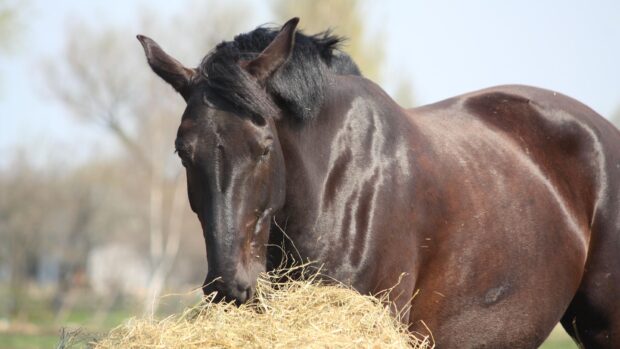As hay becomes harder to find and increasingly expensive, each winter brings more “haylage virgins” – first time users of this similar, but definitely different, forage.
Haylage is not a complete feed. It’s halfway between fully air-dried hay and wet big-bale wrapped silage – and it’s easier to make than hay because it doesn’t need the (rare) three or four days of blazing sunshine to dry the grass.
Its biggest advantage over hay is that haylage is generally “dust free”. Any spores are swollen by the presence of moisture, and “stuck” to the grass stalks, so they are eaten rather than breathed in.
This means that you don’t have to soak haylage, but equally you mustn’t let it dry out or buy an overly dry supply, or the moulds will again be free for inhalation.
Well-made haylage is sweet and very palatable. Horses can gobble up their allowance, and then stand around bored. Recent research showed horses fed haylage were four times more likely to develop a stereotypical behaviour than those with access to hay or grass.
Haylage has been around for at least 25 years. Early versions were very rich and so horses became fat or unruly – this gave rise to the myths that haylage should be limited, or that it causes tying up.
These are not wholly true. Swapping weight-for-weight hay for haylage could cause such a drop in fibre intake that the horse might colic or tie up, but well managed feeding of the right quality haylage should not cause these issues. And the haylage analysed over the past couple of years ahs tended to be lower in energy and protein.
Making the switch
|
||
 |
||


 Get up to 19 issues FREE
Get up to 19 issues FREE TO SUBSCRIBE
TO SUBSCRIBE 


